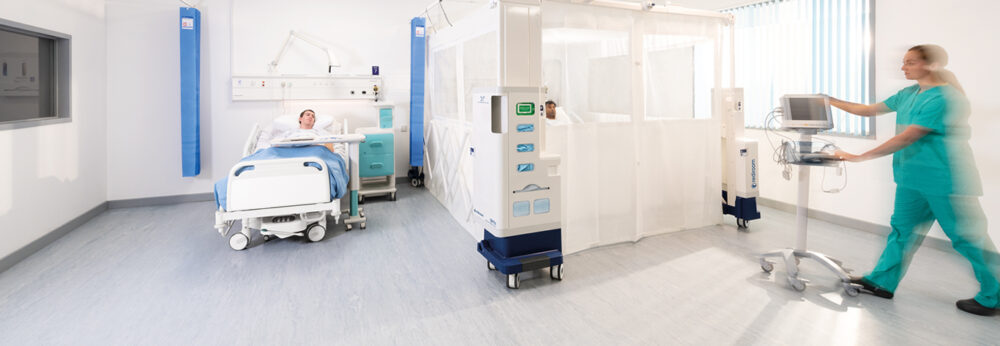Posts Tagged ‘PATIENT ISOLATION’
How Rediroom can improve patient flow and reduce the risk of HCAIs
In our latest article, we discuss how Rediroom increases the options for IPC teams and bed managers through placing patients in the most suitable accommodation, which in turn, reduces the risk of HCAIs and improves patient flow. The Rediroom has been designed to offer the middle ground between single rooms and multi-occupancy bays – providing many of…
Read MorePersistent shedding of COVID-19 – what does this mean?
Several epidemiological studies have shown that the shedding of the SARS-CoV-2 virus that causes COVID-19 can continue for many days after symptoms resolve. What does this mean? Do people remain infectious after their symptoms resolve? The answer isn’t clear, but it seems that people are most infectious at the start of their symptoms, and much less…
Read MoreMore single rooms = less MDR Gram-negatives in the ICU
An 11 year Dutch study provides compelling evidence that a move to single rooms from multi-occupancy bays dramatically reduced the burden of multidrug-resistant (MDR) Gram-negative bacteria in the ICU. The study was centred in a 16 bed ICU in The Netherlands. From 2002-2009, the ICU was composed of a mixture of multi-occupancy bays and single rooms. Then,…
Read MoreRediRoom put through its paces
An Australian study has evaluated various functional characteristics of the RediRoom, a temporary isolation room designed for single patient use. The mixed methods approach involved video recording, interviews, and objective temperature and humidity measurements within a crossover intervention study, concluding that the RediRoom had similar functional performance to performing patient care in an open plan area.…
Read MoreWatch out: C. difficile about (and you may not know it)
There has been some recent discussion on whether we should implement screening for asymptomatic carriage of C. difficile. Whilst there is some evidence that cross-transmission of C. difficile from symptomatic cases is rare (in English hospitals, at least), a recent study shows that asymptomatic carriers are an important source of in-hospital transmission of C. difficile. The study was performed over 4 months in a Danish…
Read MoreSingle room, anyone?
There has been lots of debate over many years about the extent to which hospitals should provide single rooms for patients. Should every patient have a single room for the sake of privacy? Would this help to reduce HCAI? And would it be safe even if it did? A recent review suggests that more single rooms equals…
Read MoreDaily chlorhexidine bathing works in a high prevalence MRSA ICU setting
A recent Korean study underlines the value of daily chlorhexidine bathing, demonstrating a reduction in the trend of MRSA incidence in a high-prevalence ICU setting. The study also underlines the threat of reduced susceptibility to chlorhexidine emerging, which may begin to erode gains that have been made through the introduction of chlorhexidine. The study was performed…
Read MoreWhich strategy is most cost-effective in preventing the transmission of C. difficile?
As resources become more and more constrained in healthcare facilities around the world, we need to think in terms of both effectiveness, and cost-effectiveness. A new modelling study published in PLoS ONE evaluates the cost-effectiveness of several strategies to prevent the transmission of C. difficile. Probably the key finding of the study is that hand hygiene compliance, environmental…
Read MoreThe physical environment and norovirus containment
As norovirus season gets into full swing, spare a thought for those hospital that still have open plan ‘Nightingale’ style wards. These worked for Florence in a Victorian era, but narrow bed spacing and a lack of single rooms makes the containment of infectious diseases very challenging in these wards. A study just published in…
Read More




